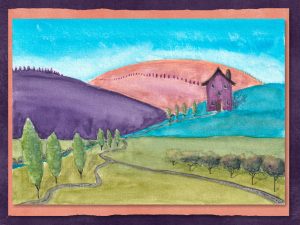*BOOKS* Three Easy Steps to Writing Vivid Characters
Have you ever read a book where the characters were so real, you found yourself thinking about them long after the book was over? What is it that made them so memorable? Why do some characters stick in our brains for years, becoming our close friends, when others barely come to life even as we read?
Creating unforgettable, vivid characters is the first and most important step to creating an unforgettable, vivid book. And the good news is, achieving a memorable character is actually much easier and much less work than you think.
Here is my three-step process:
Step One
Before you write a single page of your novel, sit down and fill out questionnaires about your characters that tell you everything about them. Start with the basics, from height, to eye colour, hairstyle, skin type, even clothing. Then move on to their personality. What is their favourite colour? What is their favourite food? Do they have a nervous habit? What do they tend to do when angry: simmer, explode, sulk, stalk off? What is their history? What were their parents like? Even write down their phobias and hang-ups. (See my free character questionnaire and some tips for using it if you want more help with this.)
You’re not going to use all of this information. There simply isn’t the space in novels to add in everything, and too much information about your characters has the same effect as not enough. But if you do these questionnaires, you will know so much about your characters, that you will be able to see them in any situation and keep them consistent. Maybe you have a character who hates his vegetables. Well, then he is going to be the character seen picking out the carrots from his stew while everyone else is tucking in. Then, in a scene when he’s not eaten for days, have him eating his stew – carrots and all. This will show your character’s hunger far more than telling a reader your character is starving.
Step Two
Choose three or four memorable things about your character – whether it’s looks, behaviour, or background. For example, in my novel Bloodline: Alliance (available for free on this site), I have a character called Darrus. While there’s a lot to this large battle-ready warrior, I have singled out the following four facts: he is enormous in height and size; he is usually grim-faced; his words rumble in his chest; and he is often pacing the floor, ready for action.
Now here is where the magic happens – where your characters truly come to life . . .
Step Three
Repeat these three or four facts as often as you can, in as many different ways as you can. Nearly every time we see these characters in a scene, try to squeeze in a few of your chosen attributes. Do it through tags, beats, character dialogue, or even in the actions and thoughts of other characters – any way you can.
For example, I might have one of the other characters reach up and pat Darrus’s enormous bicep. Or I could have one of the characters say, “Sit down, Darrus, and stop pacing.” Or perhaps I say, instead of ‘Darrus said’, that ‘Darrus rumbled’. I might have all the characters laughing at something, except for Darrus who refused to smile.
Can you see how it’s working? You’re already starting to imagine Darrus, aren’t you? And he’s just one of the minor characters.
That doesn’t mean you only mention those three to four things. The reader is going to want to know a lot more than that. However, the smaller the detail in novels, the bigger the memory, especially when it comes to characters. And the more memorable your characters, the more memorable your novel.






























